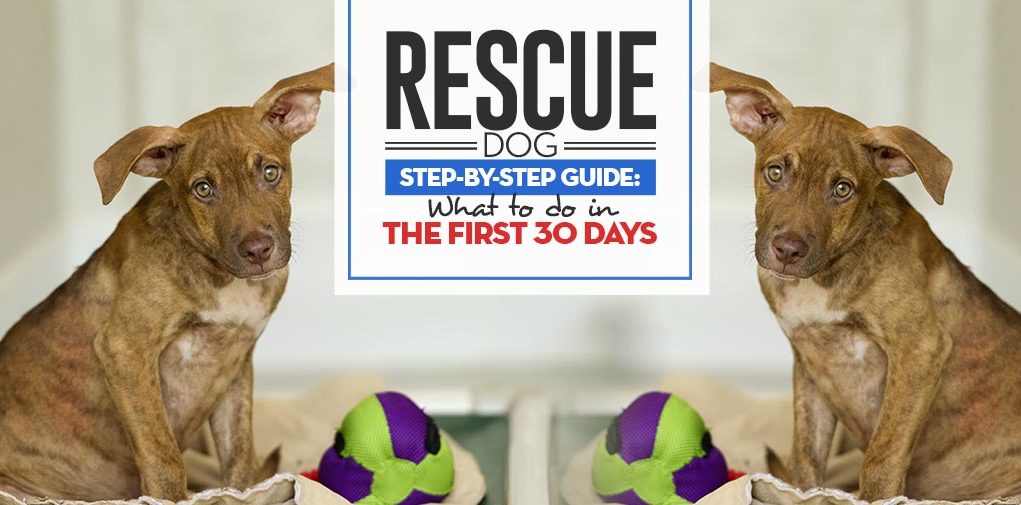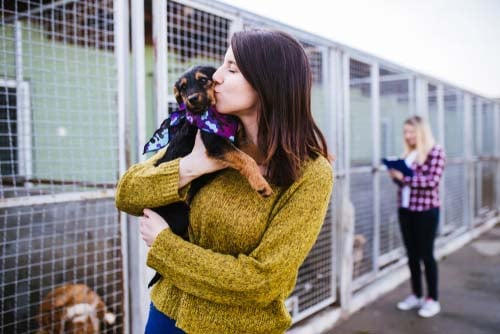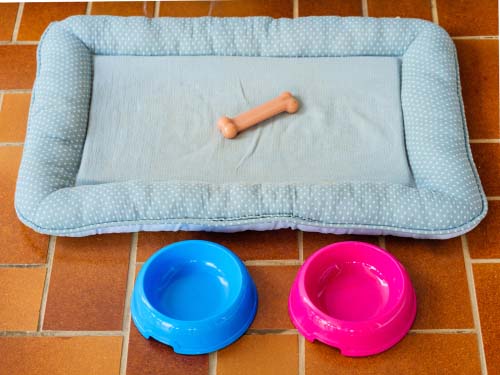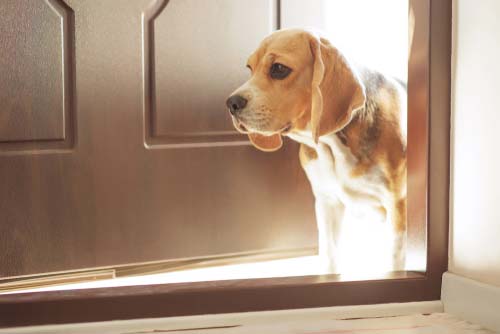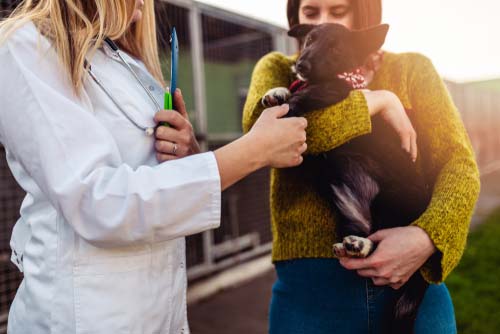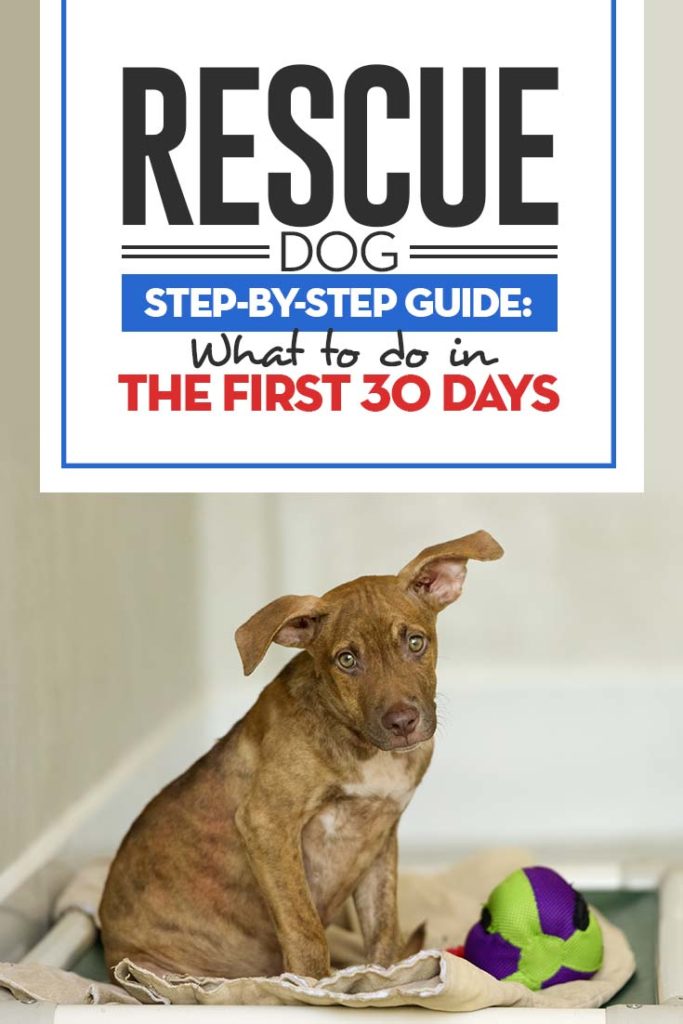Before you bring your new rescue dog home, you need to be prepared for both yours and your new pet's needs. Rescuing a dog isn't always a smooth process, and it's best to have a plan before the new four-legged family member starts getting accustomed in your house.
Table of Contents
To avoid having to return the dog like many others do, the preparations should start before you even go to the shelter to pick out a rescue pup.
Taking on the responsibilities that come with being a dog owner should not be taken lightly. And, adopting a rescue dog can add even more daily burden, especially in the beginning.
Puppies will typically adjust to a new home fairly quickly, whereas it may take an older rescue dog months before they're completely comfortable in the new place.
Below is an easy-to-follow step-by-step guide to getting a jump start on your rescue canine ownership responsibilities.
First 30 Days: Rescue Dog Care Guide
Step 1: Discuss Things with Your Family And Make A Vet Appointment
Before you go to pick and adopt a rescue dog, and even before you fully decide to get one, make sure everyone in your household knows the rules.
More importantly, be upfront with them about what to expect from having a dog around so that you wouldn't have to give the pup later if the family isn't comfortable.
Things like “will the dog be allowed on the couch”, “will the dog be allowed in the kitchen”, “who's going to be walking the dog”, “what should or shouldn't be done or said,” or “when will snacks be fed” – these need to be decided beforehand.
If you are not clear with the rules from the very beginning, your rescue dog is likely to be confused and won't follow any of them.
Consistency is the key.
If certain people in the household have certain duties, like walks and baths, make them known right away. Have everything decided on, preferably with a schedule, before the new pooch comes home.
Step 2: Have Someone Be With Them Often
If possible, you should arrange to bring your rescue dog home when you can take vacation time at work, or when there will always be someone at home with the dog for the first few days.
When you pick up your pooch, get as much information as possible from the shelter.
What time does the rescue usually feed the dog?
Is there a certain time she should go outside?
Routine is important.
If you are unable to be home or have someone be home, have a sitter come check on them.
Keep your dog's schedule the same for at least the first week or two, then start gradually changing it to your desired schedule.
But don’t have any gatherings at your home yet. You, your family and your friends will be very excited to see the new family member.
However, your rescue dog may be feeling nervous, and a little scared. Keep things calm at first.
Prepare more supplies: get a dog harness, leash and collar.
On the collar or harness, have the ID tag attached with your personal details and space for rabies vaccine confirmation once you vaccinate your pup.
Step 3: Set Boundaries and Give Your Dog Space
Dedicate an area for your new rescue dog. Have a dog bed, crate, blanks and dog toys set up.
You want everything to be in place when the dog comes home. With this done, your pooch will feel more secure and learn the routine faster.
Ask the shelter what food the dog is used to eating. Over the next week, mix in the food that you will be feeding.
Just make it a little more of the new food and a little less of the old food every day until the kibble is completely switched over by the end of the week.
Ask the shelter for any toys or blankets that your adopted dog may have had.
Don’t wash these at first – leave them in her area so she has something familiar.
Don’t wash the scent off until your pup has been with you for a couple weeks.
Even if the fur-baby was house-broken, you may want to pick up pee pads.
Some dogs will lose their training for a few weeks due to anxiety and being unfamiliar with the area.
Pee pads have an attractant that draws the dog there to eliminate.
This is a great place to start training them in other areas as well.
If there are areas you don't want the new rescue dog to have access to due to safety concerns, like the kitchen that's full of dangerous things, then set up pet gates.
Boundaries are actually helpful for dogs too and mentally stimulate the dog.
Step 4: Socialize Your Rescue Dog with the Family
Have a dog seat belt or a travel crate when you go pick up your rescue pet. You'll have to restrain the dog in the car for both of your safety.
When you get home, before you enter the house, put the collar and leash on the dog, and walk your to potty and to work off nervous energy.
Just a walk around the block is fine. This also helps the dog to get familiar with the new sights and smells.
You want to introduce the rest of the family outside. This could be other animals, kids or adults. While introducing people is fairly straightforward, other animals can be more complicated. Other dogs need to be on a leash as well.
Keep the introductions calm and orderly. Nobody should get overly excited about the dog since it may scare or make the pup nervous. Let the dog approach people by himself, then smell the new family members, then they can give a little scratch behind the ears.
Step 5: Get Them Home
Now you can show your new family member their new home. Let the other family stay outside for now so the pup doesn't get overwhelmed.
Keep Fido on a leash and walk around the house. Remember to only bring the new pooch to the areas that she will be allowed to go. If she won’t be allowed in your bedroom, then do not bring her there – stop at the pet gate or closed door.
Leave your new dog's “personal area” for last. This is where her bed, crate, and toys will be. If you plan to crate train, have her kennel there with the door open. When you reach this area, let the dog off the leash. This tells her that this is her area to be alone.
Don’t bother the dog when she is in her rest area. For the first month, this is where she may come if things get overwhelming. Teach kids to not pet the dog while she is eating or around her food and toys until later when the dog is feeling at home. Food makes dogs territorial and with kids around, there's a danger of lashing out.
After 30 days, you can start making more adjustments if needed, e.g. put her bowls by the utility room and the kennel in the living room. You don’t have to stick with the original layout forever, just long enough for the rescue dog to get used to her new home.
Step 6: Supervision and Training are Essential
Do not leave your new rescue canine unsupervised unless she's crated. This could be while you’re in the shower or off to the store. Until you are well on your way through training, you don’t want to put your pet in the position to potty in the house or tear something up without you being there – they might not know the rules yet.
For successful training, you want to start positive, reward-based dog training immediately. In this type of training, you will ignore the bad and reward the good with treats and affection to reinforce such behavior. If you're unfamiliar, you can take some dog training classes or simply grab a few dog training books.
Teach your dog some of the basic commands in the very beginning. Things like “no,” “stay,” “come,” “sit” and a few others. You'll need them to tell her to stay put when strangers enter your home, for example, or to avoid having the dog run off chasing squirrels.
Step 7: Consult a Veterinarian
Vet check-ups, vaccinations, health recommendations, dietary plan and more… there's plenty to do.
So, during the first 30 days with your new rescue dog, you need to take care of anything that is a health and safety related. The sooner the better.
When you go see your new veterinarian, bring any of rescue dog's health records that you were able to get from the rescue center, so your vet doesn’t have to try to get them later.
If that happens, you may need to make a second trip.
While there, discuss what core vaccines are needed (if any) and which ones are recommended but not always necessary.
Talk about what food is best for your pup, what flea treatment the vet recommends, and other important care items. Ask as many questions as you can think of – vets are used to new owners being overwhelmed.
All of this may seem like a lot to do, but first impressions are important. If you spend the time and energy to do it right in the first 30 days, your rescue dog and your family will be better off.
You won’t still be dealing with problem behaviors six months from the time your rescue pet enters home.
The time spent in the beginning will be time saved later.
How To Take Care of A Rescue Dog Take Home Message
So to summarize when you are taking care of a rescue dog here are the steps:
- Discuss Things with Your Human Family
- Take Time Off Work/Have Someone Be With Them
- Set Boundaries and Give Your Dog Space
- Socialize Your Rescue Dog with the Family
- Get Them Home
- Supervision and Training are Essential
- Make an Appointment with the Vet
It is possible your rescue dog came from a negative or abusive environment, so it's important to follow these steps.
Depending on the dog's personality, they might take awhile to get used to the surroundings or fit right in.
Either way picking or adopting a rescue dog is a noble thing to do, so for those who have rescue dogs, thank you for helping with the stray dog population out there.
Comment below and tell us about your rescue puppy!
READ NEXT: 5 Dog Rescue Stories With A Happy End That Will Make You Sob


